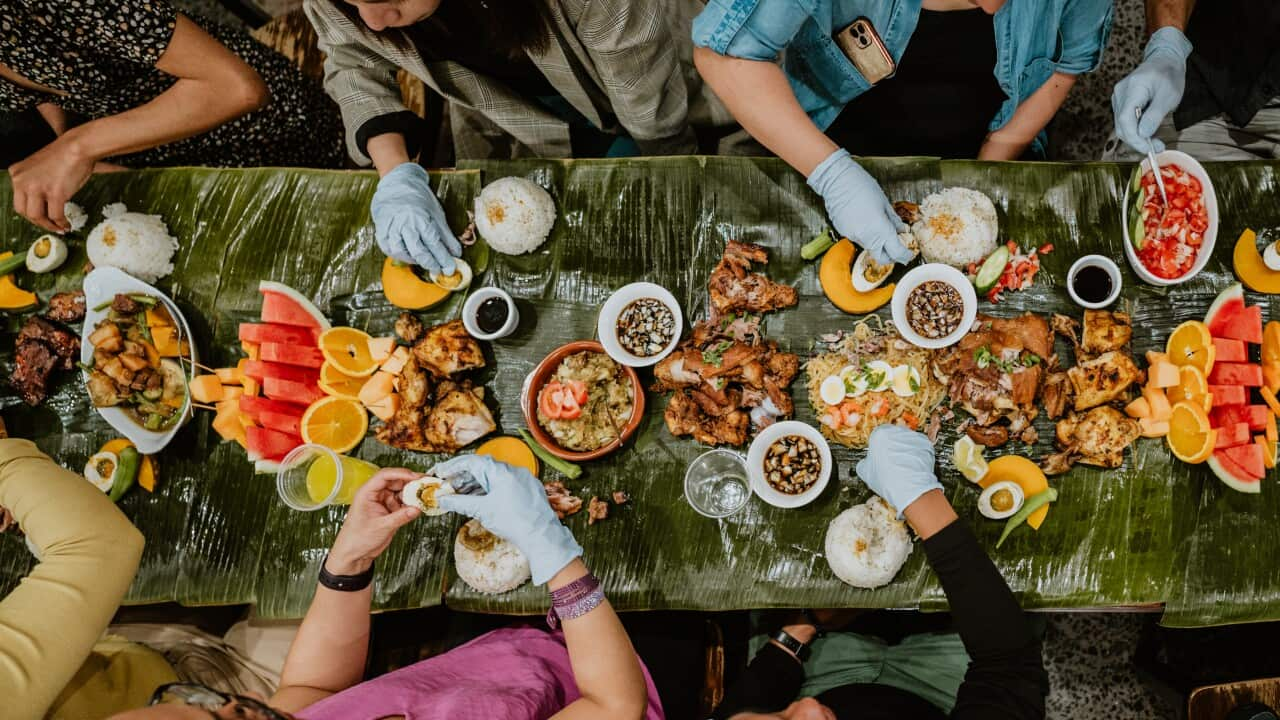For decades, Filipino food has hovered at the edges of Australia’s culinary conversation, beloved within the community, but rarely taking centre stage. That might be about to change. From Tita Carinderia in Sydney’s Marrickville to Sir Manong at Chatswood Chase and Canberra’s cult favourite Lolo & Lola, a new generation of chefs is rewriting what Filipino dining looks and tastes like.
Across Australia, there are now more than 200 Filipino eateries, according to POIData, from casual carinderias (canteens) to sleek modern restobars. What unites them is a confidence that feels distinctly second-generation, proud, certainly playful, and unafraid to go viral.
Not your typical Tita
In Marrickville, Tita Carinderia’s colourfully-painted walls, lace curtains, and framed photos of Filipino celebrities feel like a slice of home, with a twist. “Our tagline is not your typical Tita,” says co-owner Christopher Palamara, who opened the café alongside Kenneth Rodrigueza and Karen Rodrigueza-Labuni in memory of their late aunt, Marlene. “In Filipino culture there’s the idea of a ‘toxic auntie’, someone a bit judgemental. Our Tita was the opposite: warm, open, and joyful. That’s what we wanted to capture.”

Tita Carinderia's famous ube soft serve.
That warmth has clearly landed. Since opening in 2022, Tita’s Insta page has clocked more than a million views, with queues down the block on opening weekend. “There’s a short video of us stamping a takeaway bag with our logo - that one went crazy,” laughs Chris. “Social media definitely got the word out. But at the end of the day, it only works because the food’s good.”
Their menu is unapologetically nostalgic: pandesal (the classic Filipino bread roll) stuffed with cheese, and silog breakfasts - garlicky fried rice and egg paired with longganisa sausage or tapa (cured beef). “It’s the ultimate comfort food,” says Chris. “Sweet, salty, garlicky, it’s diner food, hangover cure, and national nostalgia all in one plate.”
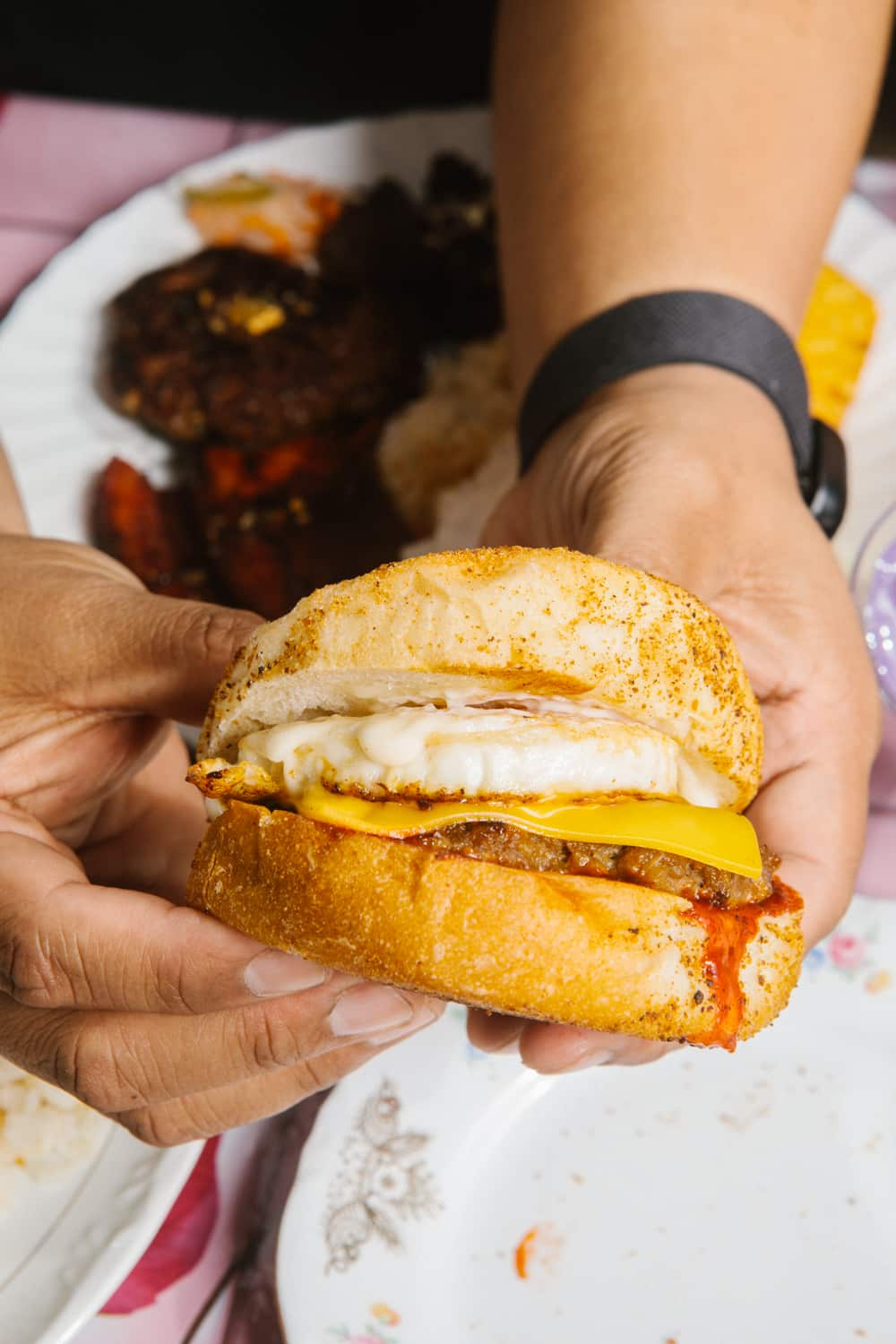
Tita's famous longganisa egg & cheese. Credit: LUISA BRIMBLE
Come dinner, Tita morphs into a cheeky tribute to Jollibee, the Philippines’ most beloved fast-food chain. “It’s our take on what we grew up with,” Karen explains. “Spaghetti and fried chicken, but done Pinoy style.”
Opening in Sydney’s inner west was a bold move. “Most Filipino restaurants have traditionally been in areas like Blacktown or Mount Druitt,” says Karen, who moved from the Philippines as a child. “We wanted to bring it into the heart of the city. Ingredients are easier to source now — banana ketchup, vinegars, all the things we missed.”
For Karen, feeding people is more than business. “It’s my love language,” she says. “You feed people, you make them happy. That’s the Filipino way.”
A proud home in Canberra
Down south, in Canberra, Kim Cudia and Jay Prieto had a similar realisation. When they arrived from the Philippines as apprentices in 2004, Filipino restaurants were almost non-existent in the capital. By 2014, they decided to change that, opening Lolo & Lola, now one of Australia’s most celebrated Filipino eateries.
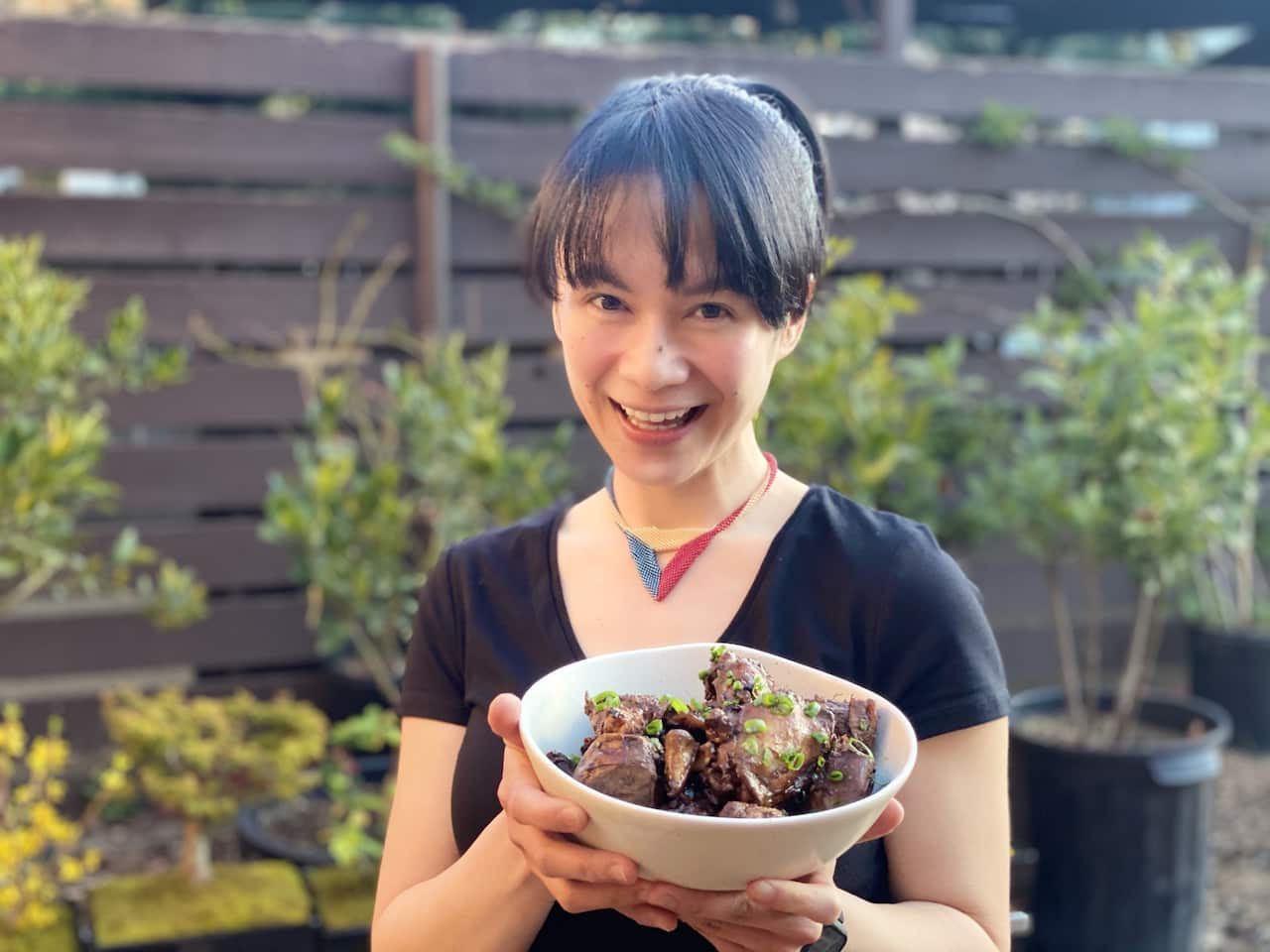
Kim Cudia of Lolo & Lola holding a bowl of chicken adobo.
“We noticed that not many people here knew our food,” Kim says. “It broke our hearts a little. We wanted to show how special Filipino cuisine is - to share honest flavours from our family kitchen.”
Almost everything on their menu is drawn from home recipes passed down through generations. “We like to keep things traditional,” Jay explains. “But when we do modern twists, we go big, Filipino degustations, truffle dinners, events that show the cuisine can evolve too.”
That balance between tradition and innovation is a running theme across the Filipino food movement. “Our parents preserved our food culture the old-school way,” says Kim. “Now, younger Filipinos are sharing it with technology. There’s a surge of Pinoy pride, people are proud to say, ‘This is who we are, this is what we eat.’”
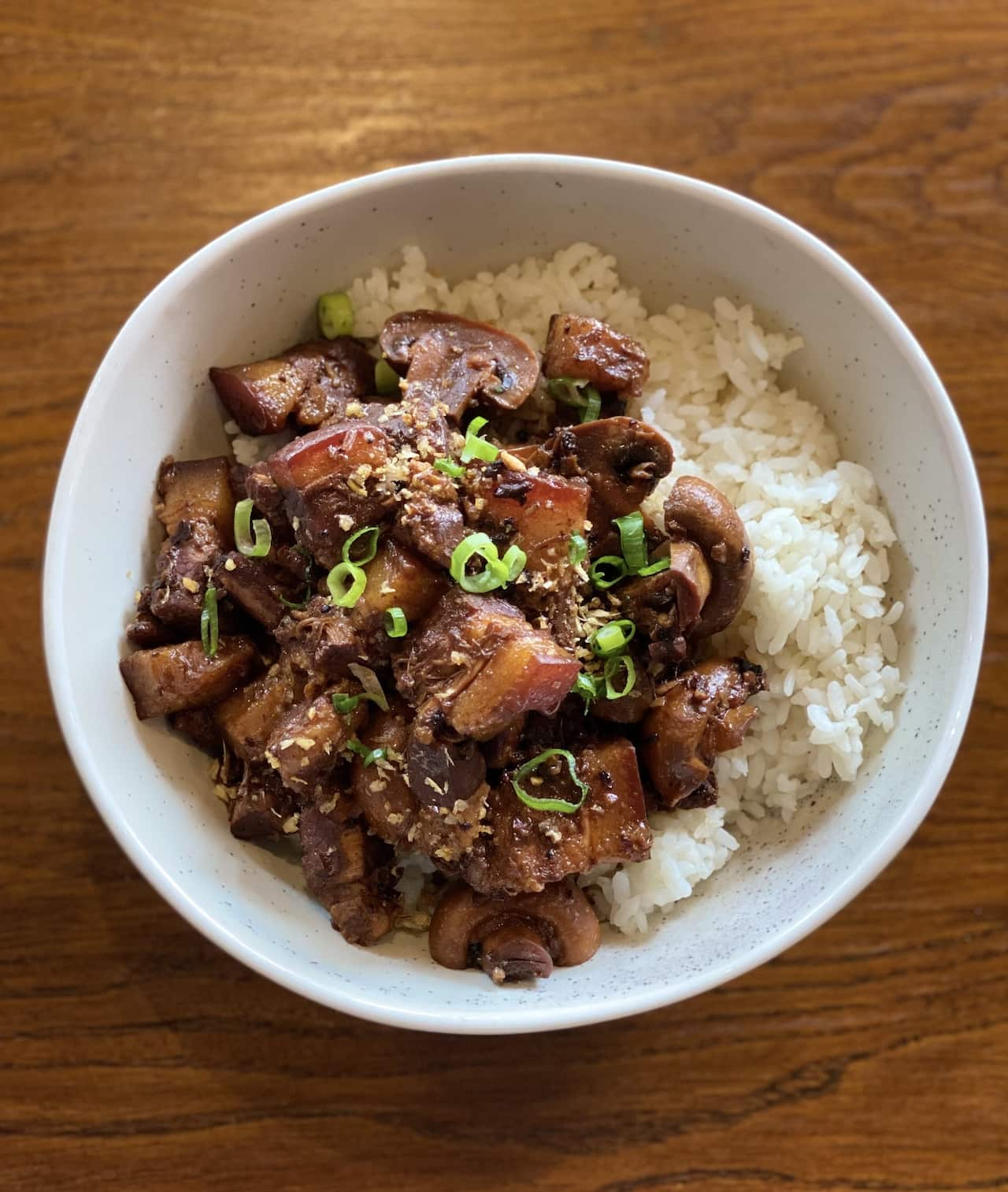
Lolo & Lola pork and mushroom adobo.
Social media has played a major role in that pride. “Platforms like Facebook and Instagram make it easy for people to see what we do,” Jay says. “You post a picture of adobo or sisig, and suddenly people want to taste it. We get younger diners coming in saying, ‘I saw your food online - what’s adobo?’ and that curiosity keeps growing.”
Their eatery has become a community hub. “It’s more than just a restaurant, it’s home,” Kim says. “For Filipinos here, it’s a place that feels familiar. And for Australians, it’s a way to experience our culture without leaving the city.”
A cuisine coming into focus
Ask pastry chef Charles Go, who was born in Manila and now calls Marrickville home, and he’ll tell you the shift has been a long time coming. “For years, Filipino food was one of those hidden-gem cuisines,” he says. “Loved within the community, but not visible to the wider public. Now, people are seeing how vibrant and soulful it is, and chefs are presenting it in ways that feel both familiar and fresh.”
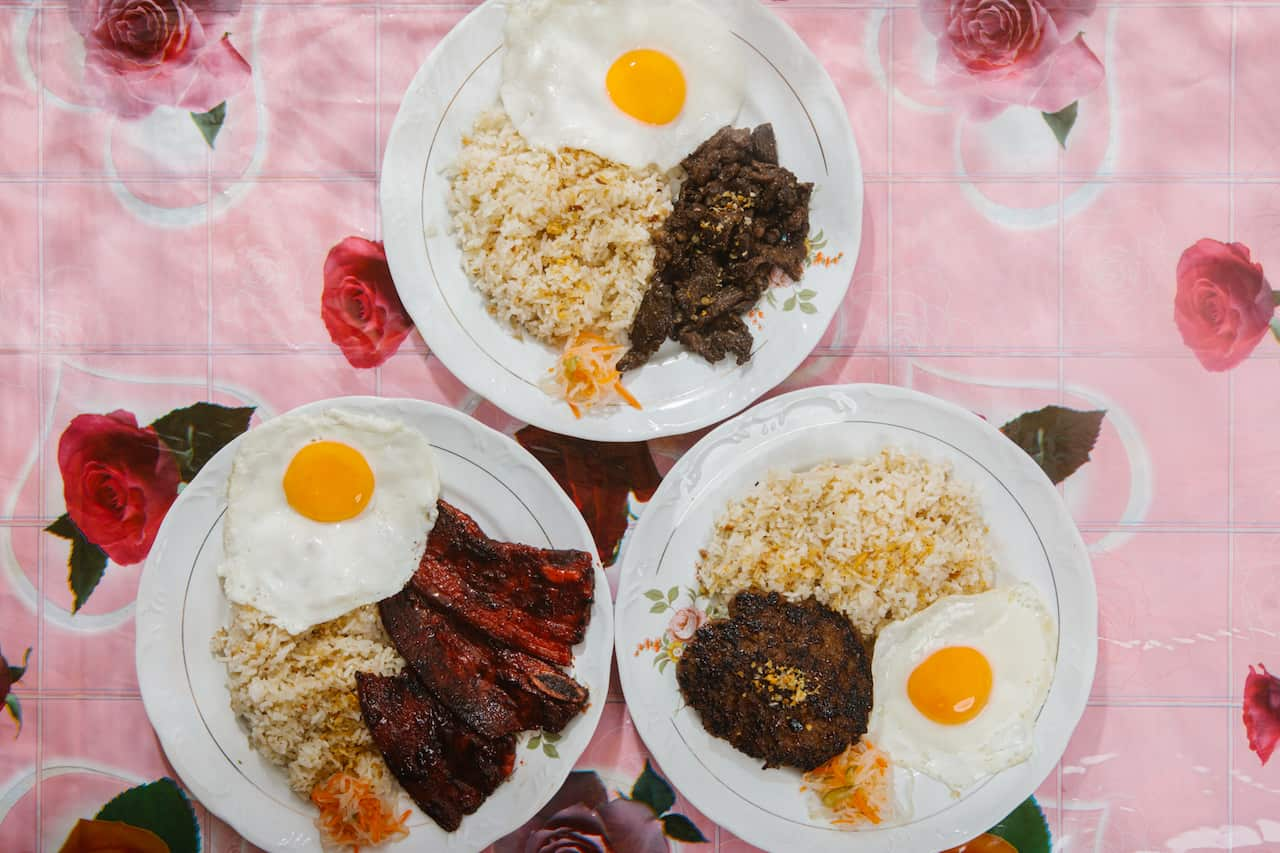
Carinderia silogs: tapsilog, charsiu tocilog & patty longsilog. Credit: LUISA BRIMBLE
He believes the timing is perfect. “When Australians think Southeast Asian food, they usually think Thai or Vietnamese. Filipino food has always had as much to offer, it’s just taken a while for people to understand its complexity. Every dish tells a story of history, migration, and adaptation. There’s sweetness, tang, depth, it’s comfort food with layers.”
Charles also credits the new generation’s confidence. “Filipino chefs aren’t trying to fit in anymore. They’re saying, ‘This is who we are.’ They’re modernising classics, refining techniques, and showing that Filipino food can be both deeply traditional and beautifully contemporary.”
Where it’s headed next
From Canberra’s Lolo & Lola to Sydney’s Tita Carinderia, there’s a shared sense of optimism and community. As Kim and Jay put it, “Whether it’s fine dining or casual, Filipino restaurants always centre on connection. Food is how Filipinos show love.”
So is Filipino food having a moment? Absolutely, but more importantly, it’s claiming its place. No longer hidden in suburban enclaves, it’s front and centre, teaching Australians not just new flavours, but new ways of eating and belonging.
As Robert Pamillio, a regular at Tita, says between bites of longganisa and garlic rice, “It’s like bringing our heritage to us here in Australia. The decorations, the food - it all feels like home.”
Share
SBS Food is a 24/7 foodie channel for all Australians, with a focus on simple, authentic and everyday food inspiration from cultures everywhere. NSW stream only. Read more about SBS Food
Have a story or comment? Contact Us





